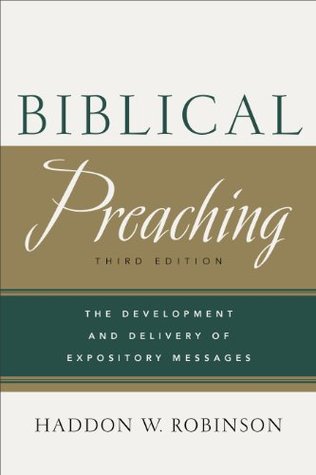More on this book
Community
Kindle Notes & Highlights
Read between
May 11 - July 9, 2018
Introductions should orient the congregation to the body of the sermon and its development. To introduce is a transitive verb. An introduction must introduce something. Therefore, there is no such thing as “a good introduction”; there is only a good introduction of a particular sermon.
Other things may be said about introductions. Don’t open your sermon with an apology. When we use an apology, we hope to win sympathy. But at best we gain pity.
When people know what they are looking for as you read the text, they often discover that they can read the Bible for themselves. Understanding the Scriptures is not something reserved for the professional elite.
Before you speak, you should pause several seconds to capture attention. You and the congregation ought to start together even though you might not finish together. Look at the people, not at your notes or even at your Bible.
There are three types of preachers: those to whom you cannot listen; those to whom you can listen; and those to whom you must listen. During the introduction the congregation usually decides the kind of speaker addressing them that morning.
You should conclude, and the conclusion should produce a feeling of finality. Like an able lawyer, a minister asks for a verdict. Your congregation should see your idea entire and complete, and it should know and feel what God’s truth demands of it. Directly or indirectly, the conclusion answers the question, “So what? What difference does this make?” And your people face another question as a result of an effective conclusion:
“Writing,” said Francis Bacon, “makes an exact man exact in thought and in speech.”
Your sermon should not be read to a congregation. Reading usually kills a lively sense of communication. Neither should you try to memorize your manuscript. Not only does memorization place a hefty burden on you if you speak several times a week, but an audience senses when you are reading words off the wall of your mind. Agonize with thought and words at your desk, and what you write will be internalized. Rehearse several times aloud without your manuscript. Make no conscious effort to recall your exact wording. Simply try to get your flow of thought clearly in mind. When you step into the
...more
Listeners hear your sermon only as a series of sentences. Transitions serve as road signs to point out where the sermon has been and where it is going. Transitions, therefore, are longer and more detailed than in writing.
If you pepper your sermons with words like eschatology, angst, pneumatology, exegesis, existential, Johannine, the Christ-event, you throw up barriers to communication. Jargon combines the pretentiousness of big words with the deadness of a cliché, and it is often used to impress rather than to inform an audience.
Speakers will use questions where writers may not. A question invites the listener to think about what the preacher will say next and often is used in a transition to introduce a major point or a new idea.
Ministers are the only professionals who have people come to hear them on a regular basis. Physicians, lawyers, and teachers are professionals, but they do not have people assemble weekly to hear what they have to say. We preachers use words as tools, and we ought to use them with both thought and skill. We owe that to the men and women who come Sunday after Sunday to hear us.
Not only do your voice and gestures strike the audience’s senses first, but your inflections and actions transmit your feelings and attitudes more accurately than your words. Scholars in several disciplines—psychology, anthropology, sociology, and speech communication, to name a few—have investigated the effects of nonverbal communication.
In a famous study psychologist Albert Mehrabian broke it down to a formula. Only 7 percent of a speaker’s message comes through his words; 38 percent springs from his voice; 55 percent comes from his facial expressions.
Practice should not make permanent. It should make you effective.


